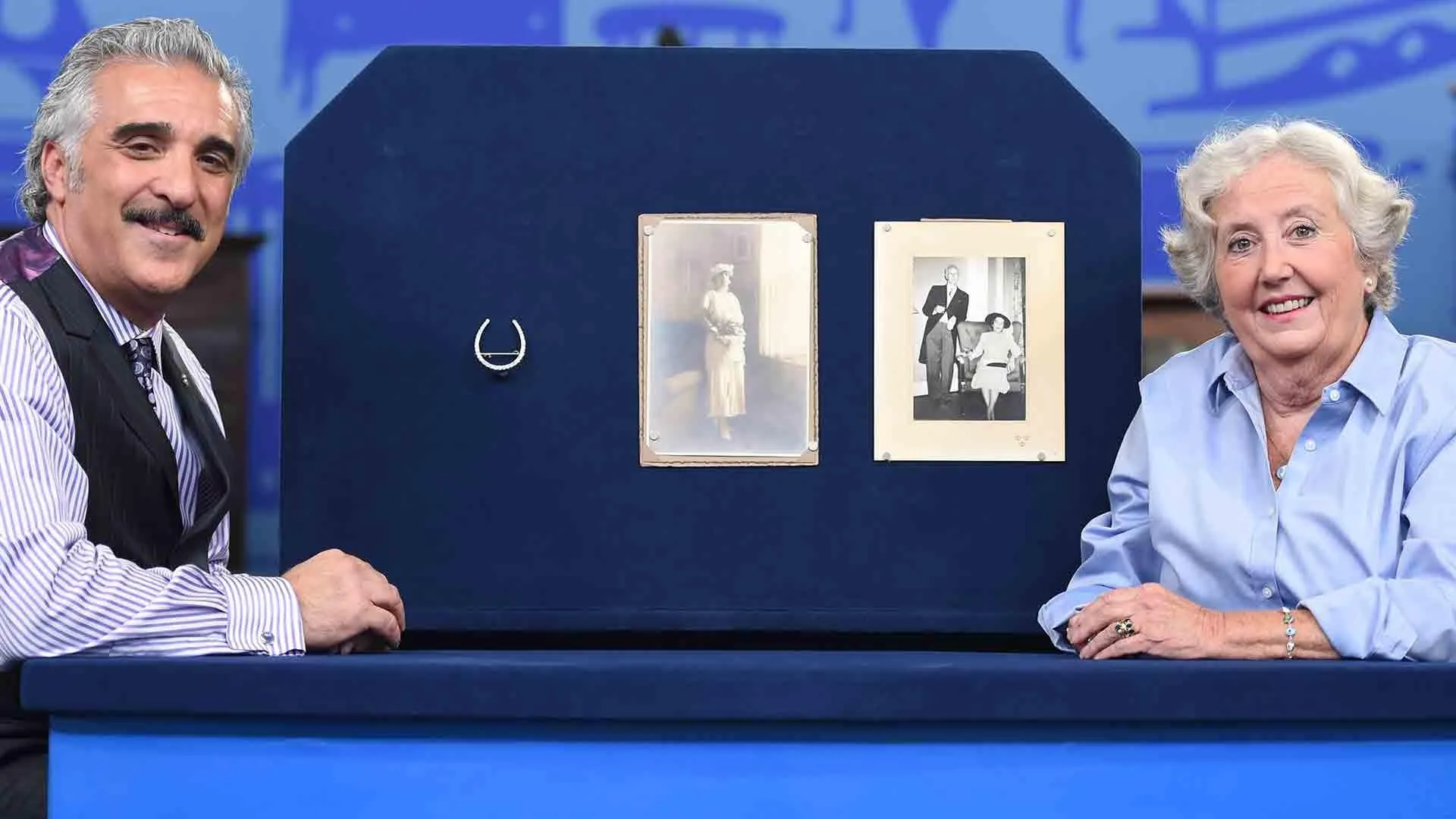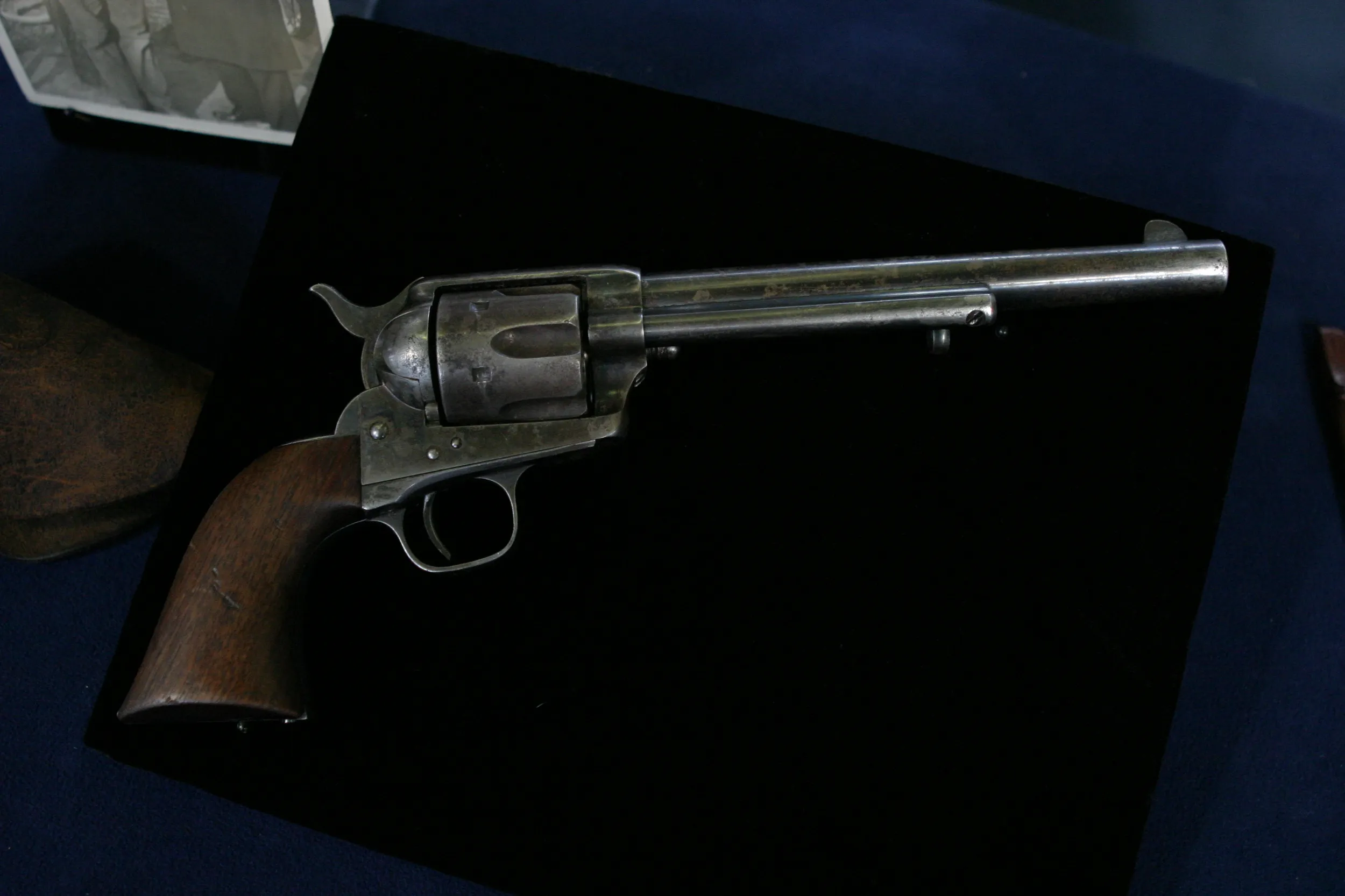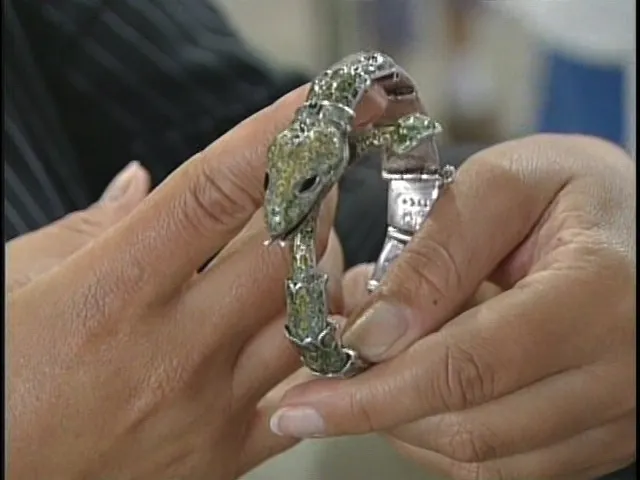GUEST: What I brought you is a lamp that's been in my family since about 1915, and it's been part of my household since the late 1970s.
APPRAISER: And what do you think it is?
GUEST: Well, the family has always called it the Tiffany lamp. I've never had it appraised. I've always assumed it's a Tiffany. I saw some marks that made me believe that it was indeed a genuine Tiffany, and when I looked online, I was a little disappointed because this type of lampshade, as I understood it, was of the lesser desirable Tiffany lamps.
APPRAISER: Do you know, in 1915, who acquired it and how it was acquired?
GUEST: My great-grandfather, his name was Frank J. Marion, and he was one of the early black-and-white silent picture movie moguls. And he built a mansion in Shippan Point, Connecticut, called the Marion Castle, and he bought a lot of Tiffany silver, bought Tiffany lamps, Oriental rugs, and outfitted his house with all of those types of goodies.
APPRAISER: Well, it is indeed a Tiffany Studios lamp, not Tiffany and Company, but Tiffany Studios.
GUEST: Okay.
APPRAISER: Tiffany and Company was founded by Charles Lewis Tiffany, who was the father of Louis Comfort Tiffany, who owned Tiffany Studios. Now the one thing, the great advantage that Louis Comfort Tiffany had, was he was allowed to retail his objects at his father's firm. He did buy it in 1915. This probably would have been brand new. They made this lamp between 1910 and 1915. And yes, you're right, in the scheme of things, compared to a leaded glass shade, it's not as valuable. However, this is not just a lamp because you have a lamp table. The glass shade does have a signature on it. It's what we call a damascene shade, and I don't want to take it apart now because it's a little delicate, but the signature is on the inside of the fitter rim, as are some small chips. There's also a mark on the underside of the base, and if you just help me for a second...
GUEST: Sure.
APPRAISER: We're just gonna tip it a little bit, but it's under one of the feet, and it's stamped "Tiffany Studios."
GUEST: That's, I'm sure, the mark that I saw.
APPRAISER: Okay. Tiffany Studios, New York, and a number, which corresponded to a number in a catalog. Most of the metal work was signed. One of the things that I also noticed about the shade is it has some carved bugs on it.
GUEST: Yes.
APPRAISER: And if you look really closely, the bugs are surrounding these little bubbles on the shade. The carving around the bubbles is to make lemonade out of lemons, and then it became something that collectors aspire to having.
GUEST: Wow.
APPRAISER: So it actually makes the shade better. What did you decide this was worth?
GUEST: Well, when I tried to do my limited amount of research, I thought it was around $2,500. And that might have been 15 years ago.
APPRAISER: Well, this is such a rare form because of the table. This is only the third one I've seen in 35 years.
GUEST: That's pretty cool.
APPRAISER: And I would say, in a retail shop, this could bring between $20,000 and $25,000.
GUEST: Wow. That's a lot more than I think any of us would have expected. It's very utilitarian for our family. It's in our living room. It means a lot to us in that sense, but it means a lot more now.
APPRAISER: (laughs) I agree.
GUEST: That's pretty amazing.
APPRAISER: If the lamp didn't have the table, it would be a $15,000 lamp.












